
The Continental O-170 engine is the collective military designation for a family of small aircraft engines, known under the company designation of A50, A65, A75 and A80. The line was designed and built by Continental Motors commencing in the 1940s. It was employed as the powerplant for civil and military light aircraft.
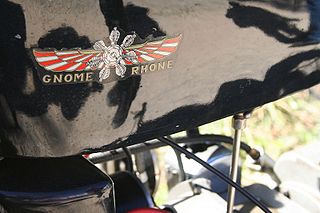
Gnome et Rhône was a major French aircraft engine manufacturer. Between 1914 and 1918 they produced 25,000 of their 9-cylinder Delta and Le Rhône 110 hp (81 kW) rotary designs, while another 75,000 were produced by various licensees. These engines powered the majority of aircraft in the first half of the war, both Allied designs as well as German examples produced by Motorenfabrik Oberursel.

The Rolls-Royce Eagle was the first aircraft engine to be developed by Rolls-Royce Limited. Introduced in 1915 to meet British military requirements during World War I, it was used to power the Handley Page Type O bombers and a number of other military aircraft.
Rearwin Airplanes was a series of US airplane-manufacturing businesses founded by Andrew ("Rae") Rearwin in 1928. Rae Rearwin was an American businessman who had developed several successful business ventures in the Salina, Kansas area in the early 20th century. Although he had no experience with aircraft manufacturing, he felt that he could succeed with his solid business acumen. With his two sons, Ken and Royce, he hired some engineers and built the Ken-Royce in a garage in Salina. The business moved to the Fairfax Airport in Kansas City, Kansas, and went through several variations before it was sold to Commonwealth Aircraft in 1942, which went bankrupt in 1946.

The Aeronca L was a 1930s American cabin monoplane designed and built, in small numbers, by Aeronca Aircraft. It differed significantly from other Aeronca planes by the use of radial engines, streamlining, and a cantilever low wing.

The LeBlond radial engines, later produced under the name Ken-Royce, were a family of 3-cylinder, 5-cylinder and 7-cylinder, air-cooled radial engines for aircraft, built in the 1930s by the LeBlond Aircraft Engine Corporation until the operation was sold to Rearwin Airplanes in 1937 and renamed Ken-Royce Engines.

The Commonwealth Skyranger, first produced as the Rearwin Skyranger, was the last design of Rearwin Aircraft before the company was purchased by a new owner and renamed Commonwealth Aircraft. It was a side-by-side, two-seat, high-wing taildragger.
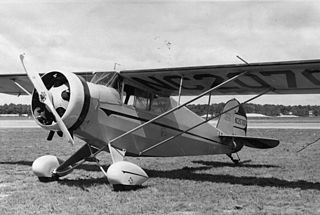
The Porterfield Model 35 Flyabout was an American two-seat cabin monoplane built by the Porterfield Aircraft Corporation of Kansas City.

The Rearwin Sportster is a 1930s American two-seat, high-winged, cabin monoplane designed and built by Rearwin Aircraft & Engines for sport/touring use.

The Rearwin Cloudster was a two or three-seat civil utility aircraft produced by the Rearwin Aircraft & Engines Company of Kansas City, Missouri beginning in 1939. It was a strut-braced, high-wing monoplane of conventional design with an enclosed cabin and fixed, taildragger undercarriage. One specialized version was produced as a trainer for Pan American Airways.
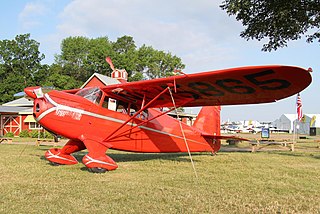
The Rearwin Speedster was a two-seat, high-wing, sport aircraft produced by Rearwin Airplanes Inc. in the United States in the 1930s.

The Eaglet 31 was a United States two-seat tandem ultra-light high-winged monoplane of the early 1930s. Intended as a low-cost aircraft, its limited production run relegated it to a footnote in aviation history.
The Rolls-Royce Eagle XVI was a British experimental 16 cylinder aero engine designed and developed by Rolls-Royce Limited in 1925. The engine was test run but did not fly, the project, together with the planned larger variant, the Eagle XX, was cancelled in favour of the Rolls-Royce Kestrel, that was being developed concurrently.
The Antique Airplane Association, Inc. (AAA) is the oldest antique airplane association in the world. The AAA formed in August 1953 by Robert L. Taylor, via a classified ad in Flying magazine and a few people with a deep-seated interest in old airplanes, for the purpose to fly, to preserve, to share and to promote the early flying machines.
The Airpower Museum is a 20,000-square-foot (1,900 m2) aviation museum located near Blakesburg, Iowa on Antique Airfield. The Airpower Museum was founded by Robert L. Taylor and the Antique Airplane Association in 1965 and features various periods of aviation through models, engines, propellers, photos and original art. Approximately 25 aircraft are on display, including warbirds from World War II.
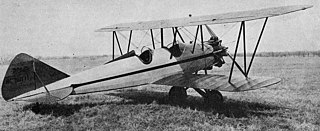
The Rearwin Ken-Royce was an American three-seat sport/touring biplane built by Rearwin Airplanes first in Salina, Kansas then Kansas City. It was the first airplane built by the company.
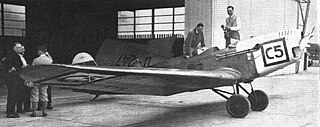
The Klemm L 26, later Klemm Kl 26, was a low-wing trainer aircraft built by Klemm.













